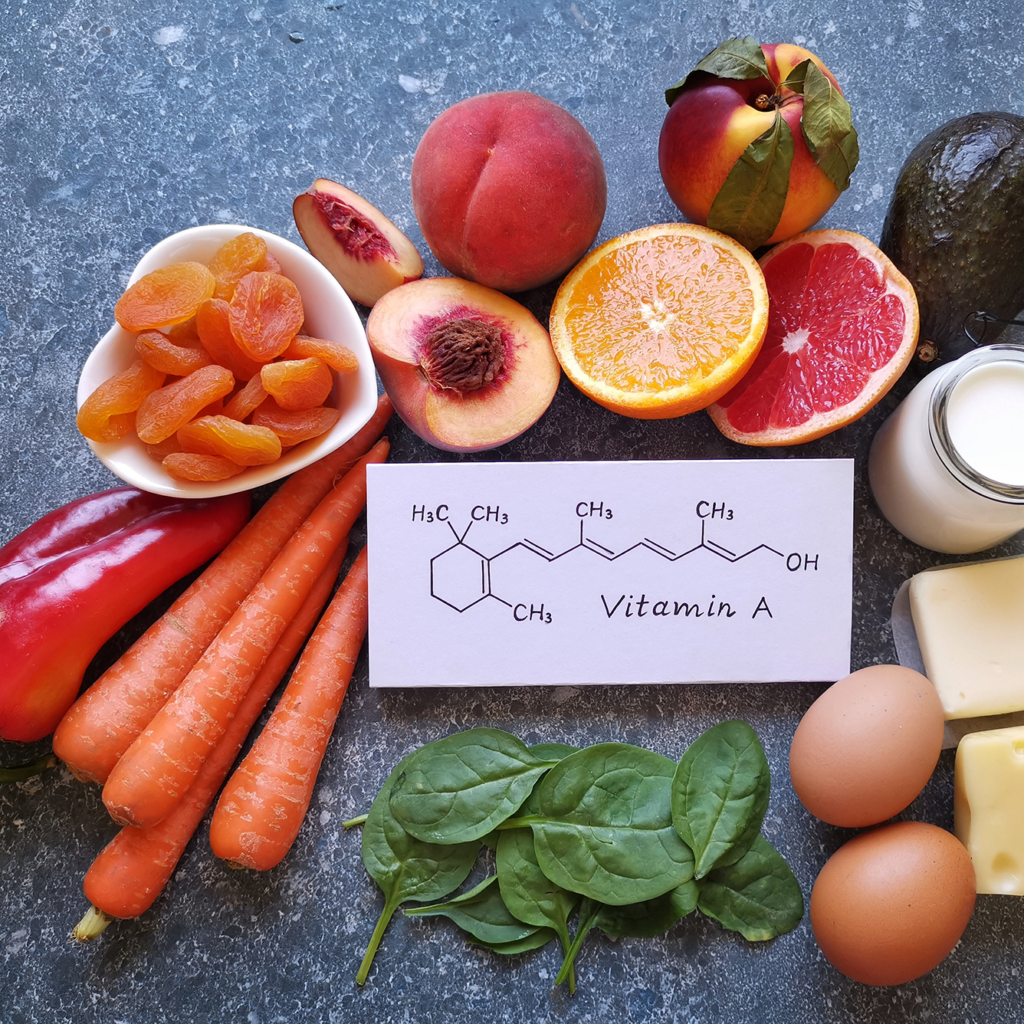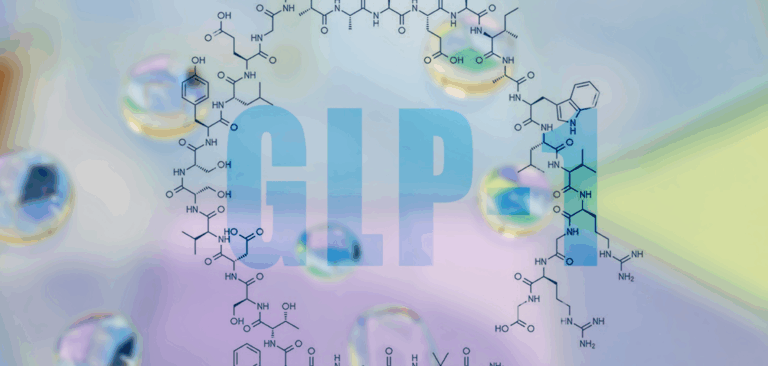Bridging Nutritional Gaps in the Diet
Supplementation to Balance Nutrient Inadequacy
Nutrition is the foundation for every single function and process that the human body undergoes on a daily basis. With the rise of increasingly processed foods that are calorie-dense and nutrient-poor, Americans are more at risk for experiencing the adverse effects of chronic nutrient inadequacy or deficiency. While both nutrient inadequacy and nutrient deficiency involve not having a sufficient intake of a particular nutrient, they are very different manifestations of a nutrient deficient diet.
Nutrient deficiencies involve a severe depletion in the intake of a nutrient or nutrients, making the body unable to function normally. A nutrient inadequacy involves an intake of nutrients that is lower than the estimated average requirement. An inadequacy may not lead to immediate symptoms, but over time can result in similar detrimental health effects.1
The most common causes of nutrient deficiency or nutrient inadequacy include:
- Poor Diet
- malabsorption issues
- chronic diseases
- medications that interfere with nutrient intake
- limited financial resources or access to nutritious food
- soil health and agricultural practices
- shifting societal dietary preferences
Nutrient depletion due to the lack of quality nutrition and excessive consumption of processed food has been directly linked to not just obesity and metabolic disorders but other chronic health conditions, including cardiovascular diseases, stroke, cancer, diabetes, and Alzheimer’s disease,1 which are among the leading causes of death in the United States.
Even those individuals who avoid the Standard American Diet and focus on eating whole foods may be at risk for certain nutrient inadequacies, which over time can lead to symptoms and health challenges. Certain diseases, medications, environmental exposures, microbiome imbalance and even stress can impact how effectively the human body digests and absorbs nutrients from food, which in turn affects overall nutritional status.
Additionally, changing soil health and agricultural practices, such as not allowing produce to vine-ripen, affects the nutrient content of food. Eating a plant-rich diet may not supply adequate amounts of key nutrients. Shifting societal dietary preferences, including the decrease in consumption of organ meats like liver, decreases collective intake of nutrients that may not be as bioavailable or found in significant quantities in other food sources.
Ultimately, supplementation to bridge common nutrient gaps even in the healthiest diets may be necessary for ensuring the optimal intake of key nutrients for health and longevity.
Targeted nutrient supplementation plays a crucial role in addressing the common nutrient gaps seen with both the Standard American Diet and certain malabsorption conditions. With modern diets often lacking essential vitamins, minerals, and other key nutrients, supplementation provides an effective means to support overall health and well-being. Providing these key nutrients within a matrix of whole foods can help bridge this ever-growing nutrition gap and reduce the risk of deficiencies that contribute to chronic diseases.
Common Nutrient Inadequacies and Deficiencies
A full list of potential nutrient deficiencies is extensive. Below we’ve focused on 4 of the more common nutrients inadequately available in processed diets: Vitamin D, Vitamin A, Vitamin C, and B Vitamins. The information below is a deep dive into food sources of each of these vitamins, and a useful chart comparing the RDA (recommended dietary allowance) versus the TUL (tolerable upper limit) that is more closely tied to optimal wellness and adequate amounts of each vitamin for long-term well-being.
Vitamin A

Vitamin A is a fat-soluble vitamin that is essential for numerous processes in the body, including maintaining healthy vision, promoting healthy skin cell turnover and regeneration, enhancing the production of white blood cells and maintaining bone health. Importantly, vitamin A cannot be synthesized by the human body, so it must be obtained from dietary sources. There are two types of vitamin A that can be obtained from foods.
The first type of vitamin A is preformed vitamin A, that can be found in fish, organ meats (particularly liver), dairy products and eggs, is more readily bioavailable for the human body, and does not need to be transformed in order for the body to utilize it.
The second type of vitamin A is provitamin A carotenoids, like beta-carotene, that can be converted by the body into vitamin A. These carotenoids are found in fruits and vegetables, particularly carrots, bell peppers, sweet potatoes, brassicas, spinach, mangos and peaches. Beta-carotene is the most common provitamin A carotenoid found in foods and dietary supplements.
Because vitamin A is a fat-soluble vitamin, eating a small amount of dietary fat alongside either carotenoid-rich fruits and vegetables or taking a supplement with vitamin A can help increase the bioavailability of the nutrient.2 Interestingly, dietary beta-carotene is considered a safer source of vitamin A because intestinal conversion of beta-carotene to vitamin A decreases the intake of beta-carotene, protecting against risk factors associated with too much vitamin A.3 Conversely, preformed vitamin A from animal sources is well absorbed in humans and has been associated with adverse health effects if consumed in excessive amounts.4
Supplementing with appropriate amounts of plant or animal sources of vitamin A is an excellent strategy for those highest at risk for inadequacy or deficiency, including those with poor diets or malabsorption issues. Conditions like Inflammatory Bowel Disease, certain liver diseases and having gastric bypass surgery can all significantly impact the absorption of key nutrients, particularly fat soluble ones like vitamin A. Vitamin A inadequacy or deficiency can manifest as increased susceptibility to infections (particularly respiratory infections), poor wound healing, skin disorders, vision troubles such as difficulty seeing in dim light and even fertility challenges.5,6
Vitamin C

Vitamin C is a water-soluble vitamin, so it is not stored in the body and must be consumed regularly from dietary sources. Citrus fruits, broccoli, bell peppers, Brussels sprouts, tomatoes, and kale are all excellent sources of vitamin C. Although no longer considered a nutrient of public health concern in most populations, vitamin C inadequacy can still occur, particularly in individuals following a severely restricted diet or those eating a Standard American Diet and not getting enough fresh fruits and vegetables.
Symptoms of inadequate vitamin C intake include bleeding gums, easy bruising, and slow healing wounds. Vitamin C is considered to be one of the antioxidant vitamins, protecting cells from oxidative damage and reducing inflammation. It is also crucial in supporting immune system functioning, as well as improving skin and connective tissue health throughout the body through stimulating the production of collagen. Vitamin C deficiency has been shown to result in impaired immunity and higher susceptibility to infections.7 Acerola berry, often used in supplements for its antioxidant properties, is a particularly rich source of vitamin C, as well as polyphenolic compounds and carotenoids.8
Vitamin D

Vitamin D plays a key role in supporting the immune system, promoting healthy bone development, and regulating calcium and phosphorus levels in the body. Adequate vitamin D helps improve the absorption of calcium in the intestines, which is vital for bone strength and reducing the risk of fractures and conditions like osteoporosis. Additionally, vitamin D contributes to immune function by enhancing the pathogen-fighting effects of immune cells, helping to reduce the risk of chronic diseases such as cardiovascular problems and certain cancers. Importantly, vitamin D isn’t found in many foods aside from fortified dairy, fortified cereals, or fatty fish such as salmon, mackerel and sardines.
The human body also makes vitamin D when direct sunlight converts a chemical in the skin into an active form of the vitamin (calciferol). The amount of vitamin D made by the skin depends on many factors, however, including the time of day, season, latitude where a person lives, and skin pigmentation, so sun exposure alone might not be sufficient to support vitamin D levels in many individuals. Because vitamin D is fat soluble, its absorption is dependent on the gut’s ability to absorb dietary fat. Impaired fat absorption is associated with several conditions, including those who have had gastric bypass surgery, some forms of liver disease, celiac disease, Crohn’s disease, and ulcerative colitis.9
In addition to those with low sun exposure or dietary intake of vitamin D-rich foods, individuals who have difficulty absorbing dietary fat are more likely to require vitamin D supplementation.9 Vitamin D inadequacy or deficiency can manifest as a diversity of symptoms, including neurological disorders such as anxiety and depression, fatigue, poor sleep quality, muscle and joint pain, osteoporosis in older adults, slow healing wounds and frequent infections.10 Poor vitamin D status has also been connected to several autoimmune disorders, cardiovascular disease, and even Type II Diabetes.10
B Vitamins

B vitamins are essential for numerous bodily functions, including energy production, nerve function and DNA synthesis. Found primarily in animal protein, dairy, leafy green vegetables, wheat germ and beans, B vitamins are not stored by the body and need to be replaced daily through dietary sources. Any B vitamin deficiency can negatively impact mitochondrial function and subsequent energy production and neurological health. Evidence from human studies indicates that a significant proportion of the populations of even developed countries suffer from deficiencies or insufficiencies in one or more B vitamins.11
Thiamin (B1) is crucial for the production of acetylcholine, the primary neurotransmitter within the parasympathetic nervous system, that is responsible for slowing heart rate and stimulating digestion. Low thiamine status has been linked to altered mitochondrial activity, impaired oxidative metabolism, and reduced energy production, as well as various forms of neurological dysfunction.12 There is a high rate of thiamin deficiency in individuals consuming a diet primarily of highly processed carbohydrates, with obesity, or alcohol-use disorder, and early symptoms of thiamin deficiency may be overlooked as symptoms of another underlying disease.13 Fatigue, changes in mood, mental fuzziness, subtle changes in memory, sleep disturbances, GI discomfort and even food intolerances have all been connected to thiamin deficiency.13
Riboflavin, also known as vitamin B2, is widely found in both plant and animal sources, including dairy, meat, eggs, nuts, enriched flour, mushrooms and green vegetables. Riboflavin is required for the proper development of the skin, lining of the digestive tract, production of blood cells, and neurological function, as well as serving as an antioxidant for cellular respiration and immune function. Inadequate absorption of riboflavin is often seen in individuals taking anticonvulsant or anticholinergic medications, as well as individuals with liver disorders and alcoholism.12 Riboflavin supplementation may also be beneficial as a prophylactic against the development of cataracts, as well as to help lower elevated homocysteine levels, which are a marker for cardiovascular disease.12
Vitamin B6, also known as pyridoxine, is metabolized by the body into pyridoxal 5′-phosphate (P5P), which functions as a coenzyme in over 150 biochemical reactions involved in numerous important bodily functions, including the maintenance of appropriate homocysteine levels, supporting immune function and brain health, and the breakdown of carbohydrates, proteins, and fats.14 Pyridoxine can be found in a wide variety of foods, with the most concentrated amounts found in beef liver and other organ meats, fish, potatoes and other starchy vegetables, and non-citrus fruits. Inadequate dietary intake of these foods, as well as kidney diseases, malabsorption syndromes (common in conditions such as Celiac Disease, Crohn’s Disease, Colitis, and following bariatric surgery) and certain medications can lead to vitamin B6 inadequacy or deficiency.
Those with B6 inadequacy or borderline/mild deficiency might have no signs or symptoms for months or even years; when symptoms do present, they will typically manifest as weakened immune function, depression or confusion and/or dermatitis with cheilosis or glossitis, progressing into more severe conditions including cardiovascular disease, microcytic anemia and electroencephalographic abnormalities if the deficiency isn’t addressed.15 Interestingly, pyridoxine deficiency is also thought to play a significant role in the development of idiopathic carpal tunnel syndrome.16 As a supplement, pyridoxine has been shown to be a helpful adjunct therapy in treating depression, aggressive behavior, and migraine headaches due to the role it plays in serotonin and dopamine synthesis.17 It is important to note that a deficiency in one of the B vitamins in isolation is rare and typically correlates with deficiencies in the other B vitamins found within the larger ‘B complex.’
Supplementation to address Nutrient Inadequacy and Deficiency
Recommended Daily Allowances and Tolerable Upper Limits for Adults
The Recommended Dietary Allowance (RDA) is the average daily dietary intake level that is sufficient to meet the nutrient requirements of nearly all (97-98%) healthy individuals in a specific life stage and gender group. This RDA value is intended to reduce the risk of nutrient deficiency or inadequacy.
The Tolerable Upper Limit (TUL) refers to the highest level of daily nutrient intake that is likely to pose no risk of adverse health effects to almost all individuals in the general population. There are, however, circumstances that would warrant dosing a particular nutrient like manganese higher than that limit based on the discretion of a health care practitioner; the TUL is not meant to apply to individuals who are treated with the nutrient under medical supervision.
| NUTRIENT | RDA | TUL |
| Vitamin A | 700-900 mcg retinol activity equivalents (RAE) per day | 3,000 mcg/day of preformed vitamin A (retinol) |
| Vitamin C | 75-90 mg/day | 2,000 mg/day |
| Vitamin D | 600-800 IU/day | 100 mcg or 4,000 International Units (IU)/day |
| Thiamine (B1) | 1.1-1.2 mg/day | The Food and Nutrition Board (FNB) has not set a TUL for thiamin because there are no well-established toxic effects from consuming excess thiamin, either through food or supplements. |
| Riboflavin (B2) | 1-1.3 mg/day | The Food and Nutrition Board (FNB) has not set a TUL for riboflavin because studies have not shown any adverse effects from high intakes, whether from food or supplements. |
| Pyridoxine (B6) | 1.3-1.7 mg/day | 100 mg/day |
*certain health statuses, such as pregnancy and lactation, will alter these values
Did you know Wholistic Matters is powered by Standard Process? Learn more about Standard Process’ whole food-based nutrition philosophy.
- Kiani AK, Dhuli K, Donato K, et al. Main nutritional deficiencies. J Prev Med Hyg. Jun 2022;63(2 Suppl 3):E93-e101. doi:10.15167/2421-4248/jpmh2022.63.2S3.2752
- Haskell MJ. The challenge to reach nutritional adequacy for vitamin A: β-carotene bioavailability and conversion—evidence in humans1234. The American Journal of Clinical Nutrition. 2012/11/01/ 2012;96(5):1193S-1203S. doi:https://doi.org/10.3945/ajcn.112.034850
- Novotny JA, Harrison DJ, Pawlosky R, Flanagan VP, Harrison EH, Kurilich AC. β-Carotene conversion to vitamin A decreases as the dietary dose increases in humans. The Journal of nutrition. 2010;140(5):915-918.
- Feskanich D, Singh V, Willett WC, Colditz GA. Vitamin A intake and hip fractures among postmenopausal women. Jama. 2002;287(1):47-54.
- Clagett-Dame M, Knutson D. Vitamin A in reproduction and development. Nutrients. Apr 2011;3(4):385-428. doi:10.3390/nu3040385
- Vitamin A and Carotenoids: Fact Sheet for Health Professionals (National Institutes of Health ) (2024).
- Carr AC, Maggini S. Vitamin C and Immune Function. Nutrients. Nov 3 2017;9(11)doi:10.3390/nu9111211
- Belwal T, Devkota HP, Hassan HA, et al. Phytopharmacology of Acerola (Malpighia spp.) and its potential as functional food. Trends in food science & technology. 2018;74:99-106.
- Pappa HM, Bern E, Kamin D, Grand RJ. Vitamin D status in gastrointestinal and liver disease. Curr Opin Gastroenterol. Mar 2008;24(2):176-83. doi:10.1097/MOG.0b013e3282f4d2f3
- Holick MF. The vitamin D deficiency pandemic: Approaches for diagnosis, treatment and prevention. Rev Endocr Metab Disord. Jun 2017;18(2):153-165. doi:10.1007/s11154-017-9424-1
- Kennedy DO. B vitamins and the brain: mechanisms, dose and efficacy—a review. Nutrients. 2016;8(2):68.
- Hanna M, Jaqua E, Nguyen V, Clay J. B Vitamins: Functions and Uses in Medicine. Perm J. Jun 29 2022;26(2):89-97. doi:10.7812/tpp/21.204
- Marrs C, Lonsdale D. Hiding in Plain Sight: Modern Thiamine Deficiency. Cells. Sep 29 2021;10(10)doi:10.3390/cells10102595
- Stach K, Stach W, Augoff K. Vitamin B6 in Health and Disease. Nutrients. Sep 17 2021;13(9)doi:10.3390/nu13093229
- Nutrients SoURLo, Intakes SCotSEoDR, Folate iPo, Vitamins OB, Choline. Dietary reference intakes for thiamin, riboflavin, niacin, vitamin B6, folate, vitamin B12, pantothenic acid, biotin, and choline. 2000;
- Aufiero E, Stitik TP, Foye PM, Chen B. Pyridoxine hydrochloride treatment of carpal tunnel syndrome: a review. Nutrition reviews. 2004;62(3):96-104.
- Parra M, Stahl S, Hellmann H. Vitamin B6 and its role in cell metabolism and physiology. Cells. 2018;7(7):84.







